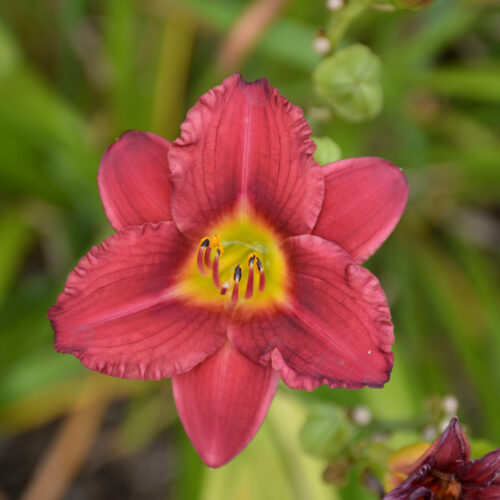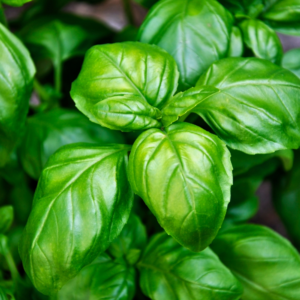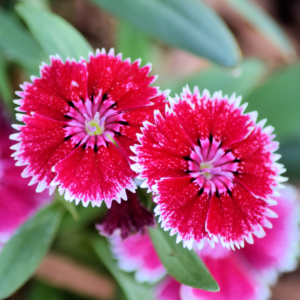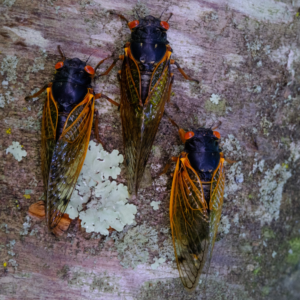Daylilies are beloved by gardeners worldwide for their stunning blooms, resilience, and ease of care. With a vast array of colors and varieties, these perennials can brighten any garden. Among the many types, the Stella de Oro Daylily stands out for its extended blooming season and compact size. Let’s explore the allure of daylilies and how to care for them, with a special focus on the popular Stella de Oro.
About Daylilies
Daylilies (genus Hemerocallis) are not true lilies but belong to the family Asphodelaceae. Native to Asia, these plants have become garden staples in many parts of the world due to their hardy nature and vibrant flowers. Each daylily bloom lasts just one day, but a mature plant can produce hundreds of flowers over the season, ensuring a continuous display of color.
Varieties and Colors: Daylilies come in a wide range of colors including shades of yellow, orange, red, pink, purple, and even near-white. The flower shapes also vary, from trumpet to spider and double forms.
Growth Habits: Daylilies are clump-forming perennials that grow from fleshy roots. They typically reach heights of 1 to 4 feet, depending on the variety.


Care Tips for Daylilies
Planting:
- Location: Daylilies thrive in full sun to partial shade. Ideally, they should receive at least 6 hours of direct sunlight each day.
- Soil: These plants prefer well-drained soil but are adaptable to a variety of soil types. Adding compost or organic matter can enhance soil fertility and drainage.
- Spacing: Space daylilies about 18 to 24 inches apart to allow for growth and air circulation.
Watering:
- Frequency: Daylilies are drought-tolerant once established, but regular watering will promote more prolific blooming. Water deeply once a week during dry periods.
- Method: Water at the base of the plant to avoid wetting the foliage, which can lead to fungal diseases.
Fertilizing:
- Type: Use a balanced, slow-release fertilizer in early spring as new growth begins.
- Frequency: Fertilize once or twice a year. Avoid over-fertilizing, as this can lead to excessive foliage growth at the expense of flowers.
Mulching:
- Purpose: Mulching helps retain soil moisture, suppress weeds, and regulate soil temperature.
- Material: Use organic mulch like shredded bark, straw, or compost, and apply a 2-3 inch layer around the base of the plants.
Pruning and Deadheading:
- Deadheading: Remove spent flowers daily to encourage continuous blooming and prevent seed formation.
- Pruning: Cut back the foliage in late fall after the first frost. This helps tidy up the garden and reduces pest and disease problems.
Dividing:
- When: Divide daylilies every 3 to 5 years to maintain vigor and prevent overcrowding.
- How: Dig up the entire clump and gently separate the roots into smaller sections, ensuring each section has at least three fans of leaves. Replant immediately.
Spotlight on Stella de Oro Daylily
Stella de Oro (Hemerocallis ‘Stella de Oro’) is one of the most popular daylilies for several reasons:
- Extended Blooming Season: Unlike many daylilies that bloom for a few weeks in early summer, Stella de Oro blooms from late spring through fall with proper care.
- Compact Size: It grows to a height of about 12-18 inches, making it perfect for borders, containers, and small garden spaces.
- Bright Color: The flowers are a cheerful golden yellow with a slightly ruffled edge, adding a sunny touch to any garden setting.
- Low Maintenance: Stella de Oro is drought-tolerant, disease-resistant, and requires minimal care once established.
Care Tips for Stella de Oro:
- Deadhead regularly to promote continuous blooming.
- Water consistently during dry periods to keep the plant blooming.
- Divide every 3 years to maintain plant health and vigor.

Daylilies, especially the Stella de Oro variety, are a wonderful addition to any garden, providing vibrant color and ease of care. With their diverse range of colors and forms, daylilies can fit into any garden design, from formal borders to naturalized settings. By following these simple care tips, you can enjoy a stunning display of blooms from late spring through fall.
Happy gardening!
-
 Raspberry Eclipse Daylily, 1 Gal$31.99
Raspberry Eclipse Daylily, 1 Gal$31.99 -
 Pardon Me Daylily, 1 Gal$29.99
Pardon Me Daylily, 1 Gal$29.99 -
 Inkheart Daylily, 1 Gal$31.99
Inkheart Daylily, 1 Gal$31.99 -
 Happy Ever Appster® Happy Returns Daylily, 1 Gal$29.99
Happy Ever Appster® Happy Returns Daylily, 1 Gal$29.99 -
 Stella Supreme Daylily, 1 Gal$39.99
Stella Supreme Daylily, 1 Gal$39.99 -
 Garden Show Daylily, 1 Gal$29.99
Garden Show Daylily, 1 Gal$29.99 -
 Stella de Oro Daylily, 1 Gal.$27.99
Stella de Oro Daylily, 1 Gal.$27.99 -
 Chicago Apache Daylily$32.99
Chicago Apache Daylily$32.99 -
 Strawberry Candy Daylily$32.99
Strawberry Candy Daylily$32.99 -
 Double Pardon Me Daylily$36.99
Double Pardon Me Daylily$36.99 -
 Monterrey Jack Daylily$36.99
Monterrey Jack Daylily$36.99 -
 Happy Ever Appster® Happy Returns Daylily$31.99
Happy Ever Appster® Happy Returns Daylily$31.99
More Recent Posts
Unveiling the Charm of Phlox
Pink Garden Phlox
10 Plants That Act as Mosquito Repellent
Basil is a great mosquito repellent plant.
Dianthus Delights: Perennial Pinks Shine
Imagine a garden where vibrant colors and sweet fragrances waft through the air — this is the magic that Dianthus, commonly known as pinks, brings to any outdoor space. Easy to grow and bursting with charm, Pinks varieties are the perfect addition to make your garden pop. Let’s dive into the joyful world of these…
Embrace the Shade: 10 Plants Thriving Under Trees!
Hey there, green thumbs and nature enthusiasts! Are you facing the challenge of gardening in the shade? Fear not! Instead of seeing those leafy giants overhead as a hindrance, let’s turn them into opportunities. Yes, we’re talking about planting beneath trees! While some might think that the shade beneath trees spells disaster for gardening, there’s…
Container Gardening: Thrill, Fill, and Spill Your Way to Green Bliss!
Welcome to the vibrant world of container gardening, where even the tiniest nooks can burst into life with a riot of colors and textures! Whether you’re a seasoned gardener or just dipping your toes into the soil for the first time, container gardening offers a delightful and rewarding experience that’s sure to bring a smile…
The Resurgence of Cicadas: What to Expect in 2024
Every few years, nature gifts us with a phenomenon that captivates and sometimes overwhelms our senses—the emergence of cicadas. In 2024, we eagerly anticipate the return of Broods XIII and XIX, each emerging in their respective ranges across the United States. As these remarkable insects awaken from their lengthy slumber, their presence will have significant…






